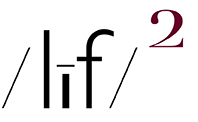made from my Adirondack chair on the Rist Camp porch ~ (embiggenable)
“Your own photography is never enough. Every photographer who has lasted has depended on other peoples pictures too – photographs that may be public or private, serious or funny but that carry with them a reminder of community.” ~ Robert Adams
WITHOUT A DOUBT, I CAN WRITE THAT MY own photography is never enough. Evidence of such is the amount of time spent, almost daily, wandering about the interweb looking for / at good pictures. That time is augmented by visits to galleries in order to view photographs. And, time spent viewing photographer monograph books should be thrown into the time-eater machine as well.
I spent all of that time viewing photographs simply cuz of the pleasure I get from doing so. That pleasure, for me, comes in 2 forms: 1) call it inspiration inasmuch as the shear diversity of POVs-how other picture makers see the world-encountered inspire me to keep on making pictures in the manner of how I see the world, and, 2) although I never thought of it this way, it is Adams’ idea of “reminder of community”.
I am not certain if Adams’ idea of “community” is photographer community based or humanity community based, Or, quite possibly, both. However one chooses to understand it, for purposes of this entry I am going with photographer-based community…
In my quest for finding and viewing good photographs, I find the the interweb is a very messy place. Doing searches based on the words “photography / photographs” most often yields up a lot chaff and precious little wheat. Instagram used to be useful but no much anymore. If you are into “groups”-usually very specific types of photography-flickr might be a good thing-but not so much for me.
In any event, let me suggest a method for getting right to the nub of viewing some damn good photographs…
Over the years, I have been submitting photographs to Photo Place Gallery themed juried exhibitions (with, I might add, a great deal of acceptance success). The themed exhibitions request for submissions are issued on a monthly basis and subsequent exhibitions are also presented on a monthly basis. Those photos which are accepted are exhibited online and on the walls of the gallery-in Middlebury, VT. And, get this, for a very nominal fee, the gallery will print and frame your photo for the exhibition. FYI, you can request the print (not the frame) after the exhibition comes down.
That written, I mention Photo Place Gallery for 2 reasons: 1) if you are at times running out of reasons to make pictures, it might be helpful to use Photo Place Gallery’s monthly themes as an exercise to get out there and make pictures, even if you do not submit the pictures for exhibition consideration. When the themed exhibition appears online, you can then see how other picture makers approached the subject, and, 2) re: the point of this entry, the online exhibitions have links to the accepted pictures maker’s websites.
Cuz the quality of the accepted photographs-30 for the gallery / online exhibition + 30 more for an additional online exhibition (selected from several thousands of submissions)-is very high*, using this website as a portal for the viewing, on the accepted photographer’s sites, of some very fine bodies of work is a no-brainer.
The number of viewing possibilities is, quite frankly, overwhelming. I think it possible that one could spend the better part of a year-with time out for coffee and a few naps-exploring the wealth of offerings.
*FYI, the jurist’s for the exhibitions, a different, single jurist for each, are nationally and internationally known photographers, gallery directors, or teachers. Hence the very high quality of the accepted photographs.
